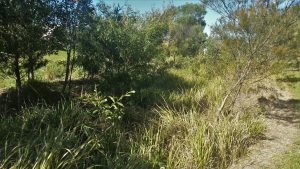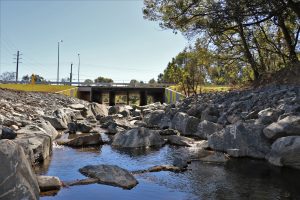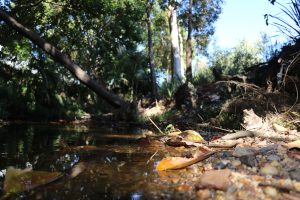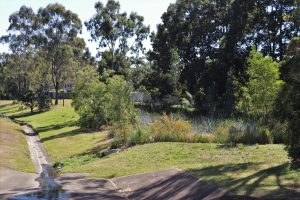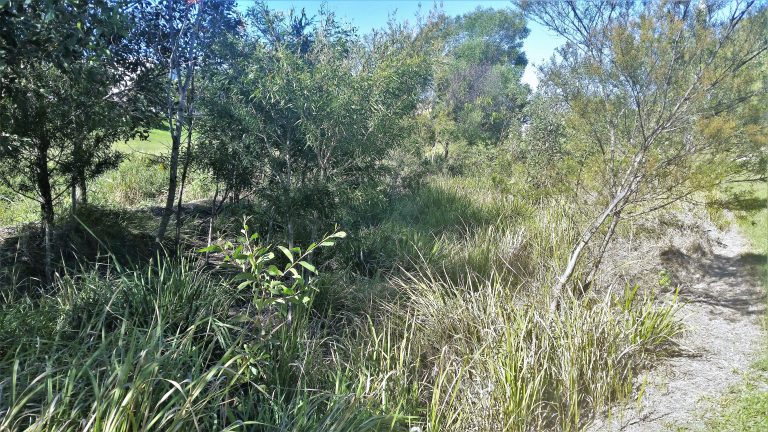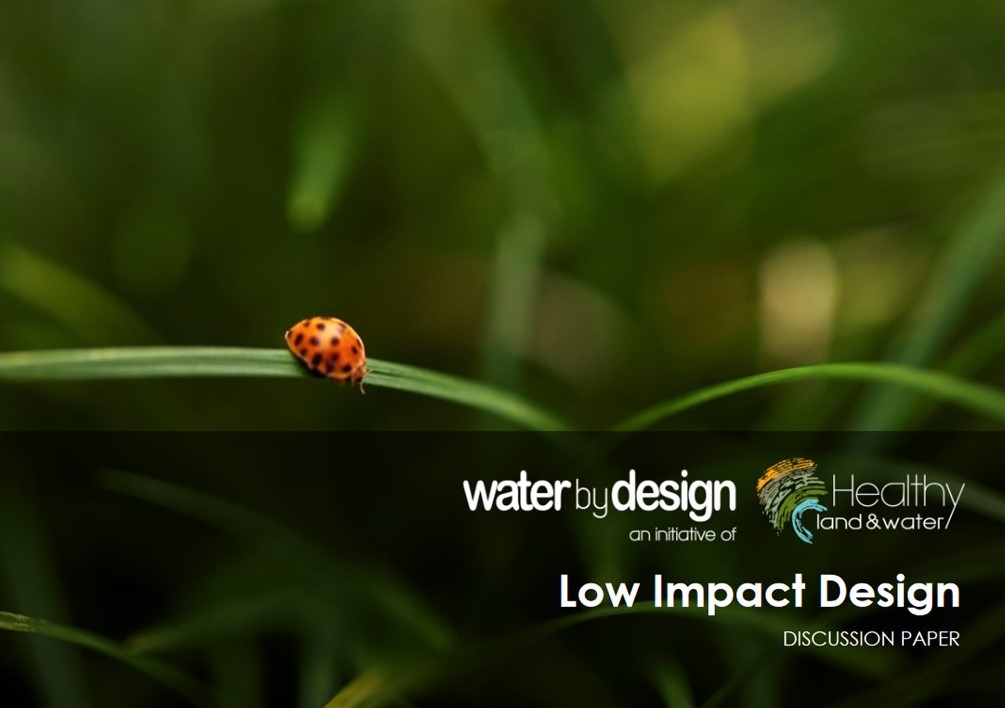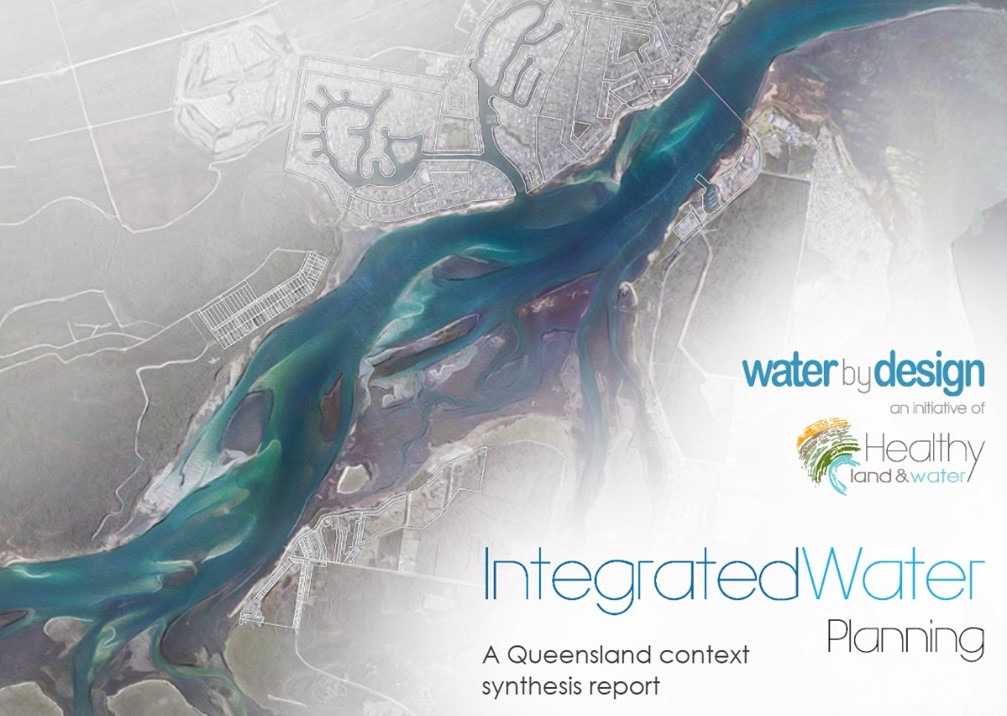Project summary
Community concerns led to Logan City Council commission the Slacks Creek Catchment Futures Study in 2012. The study outlined a long-term approach to catchment recovery that is built around community partnerships, and spawned the Slacks Creek Catchment Recovery Project; a pilot initiative founded on strong community partnerships and guided by an ‘activate, beautify and clean’ (A.B.C) approach to improve waterway health and return valuable community space. The project included community tree plantings, cleanup activities, art installations and environmental enhancement. Council’s project won the titled of Best Government Project and was a finalist in the Urban Renewal Award Category at the 2014 Healthy Waterways Awards.
Project scale and objectives
The project comprises numerous sites along the length of Slacks Creek, with the aim at each site to restore a section of Slacks Creek to increase habitat for wildlife, improve habitat quality and reconnect areas of riparian vegetation. The works aim to improve water quality and bank stability, reduce pollutant migration and increase the knowledge and engagement of the community to better conserve, manage and protect natural resources.
In its first four years, the project has activated parkland by installing and enhancing facilities, walking paths and play equipment, improved riparian function by restoring 2.6km of riparian vegetation, removed 5 tonnes of rubbish from the creek, improved connectivity by constructing a rock ramp fishway and disconnected and treated 8ha of urban catchment by installing three stormwater infiltration systems. In total, approximately 90,000 plants have been installed. Key to the success of the A.B.C approach is the focus on achieving a clean, healthy creek which supports and is supported by active and vibrant open spaces. A variety of community events and activities have been run.
Site context
Slacks Creek flows through the heart of Logan City and has suffered significantly from changes in catchment land use. Development has urbanised the catchment including reshaping some of the smaller tributaries. Slacks Creek is under pressure from erosion and pollution from unfiltered stormwater from urban areas. The creek and catchment still supports large wildlife areas and possesses enduring ecological and community values.
Issues and constraints
Over the past 50 years the catchment has changed from forested landscapes to urban uses. The impacts this change has brought has significantly compromised the creek’s ability to support biodiversity as well as recreational and social amenity values. The extent and types of rehabilitation works are constrained by available space and access. Rehabilitation measures must look beyond restoring the original creek. Instead it must accommodate past alterations and increased rates of runoff as a result of urbanisation.
Construction and ongoing costs
The Slacks Creek Recovery Project has driven an increase in Council investment and significant funding from both the State and Federal governments. Ongoing maintenance will be required; however a key aspect of the recovery project is to enhance resilience through the establishment of vegetation to reinstate the riparian zone and thus minimise the cost and requirements of future maintenance.
Monitoring
A monitoring, evaluation, reporting and improvement (MERI) process is applied on a site by site basis as works are completed. Parameters monitoring to date have included water quality and the condition and extent of mangroves.
Lessons learned
The projects collaborative approach to urban creek renewal has led to increased funding and generated widespread community support. Creating places for people and nature allows for multiple benefits to be achieved, drives investment from multiple sources and encourages stewardship from residents, businesses and the broader community.
A cleaner creek improves ecological conditions and more active parklands create a sense of place for everyone to enjoy. Couple with opportunities for residents and businesses to be an active part of the recovery process, the collaborative approach drives improved stewardship leading to reduced pollution, healthier creeks and a healthier community.
Reference
Logan City Council (and their website www.logan.qld.gov.au)
